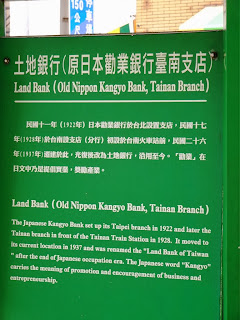On a day I had hoped to had gotten away from the urban colossus that is Shànghǎi 上海 (for a few hours at least), only to find myself unable to summon the energy to wake everyone up at an early enough hour this morning, we found ourselves instead going to the Shanghai Zoo 上海动物园. As family outings go, the results were somewhat mixed. My daughter had a good time, whereas all the required walking left my wife reeling. My feelings about today fluctuated between fun and frustration, and seeing as this is my blog, it's how I feel that determines the way this blog post will play itself out.
On the one hand, the Shanghai Zoo has several things going for it. It's close to where we live, just a relatively short walk along Hóngqiáo Road 红桥路, meaning we didn't have to deal with trying to find a parking space, or with having to ride a crowded subway train. The grounds are expansive, providing the city with some much-needed green grass. And considering it is a zoo in Asia, the animals' enclosures, generally speaking, were much roomier than the uncomfortably cramped conditions I've too often seen in Japan and Taiwan.
On the other hand, this is a zoo in Asia, or to be more specific, in China. Shanghai Zoo was very busy today, which meant that we had to put up with a lot of pushing and shoving from people trying to get a closer look at the animals (I can't even begin to imagine what the place must be like during national holidays, though the mountains of garbage I saw outside the zoo gates during the week-long National Day holiday earlier this month were probably a good indication). The noise was overwhelming at times, with the constant honking of the electric tour buggies as they passed back and forth replicating the din normally found on Shanghai's streets. There was the uncomfortable sound (our backs were turned) during a snack break of having to listen to a mother physically abuse her young son because he wasn't eating his noodles (and then the sight of watching him throw up what he had eaten as we were walking away). And the Chinese being, well, Chinese, there was the disconcerting sight of people tossing snacks at the animals, despite the signs warning them not to do so, along with additional signboards explaining why it was harmful to the animals (and all to no avail).
The verdict? If you're living in Shanghai and you have young children, you will have to go there at some point during your stay. And because Amber is only seven and we're probably going to be at post for the next two years, no doubt we will be going back. Though I'm sure when the next time comes, Pamela will find a good excuse to stay at home that day.
The view of the large Swan Lake in the center of the zoo, as seen from the small but fun Ferris Wheel (there was also a good view of the nearby Shanghai Hongqiao International Airport 上海红桥国际机场). Later, the three of us rode on a kiddie roller coaster that was also enjoyable, though my wife was somewhat frightened. Not of the ride itself, but because the roller coaster had been made in China.
Based on past experiences at Ueno Zoo 恩師上野動物園 in Tōkyō 東京, Taipei Zoo 臺北市立動物園 (aka 木柵動物園) and Washington, D.C.'s National Zoo, I was expecting Shanghai Zoo's resident pandas to be the center of attention. Instead, the panda pavilion was no more crowded than most of the other exhibits. I'm assuming that, in comparison to animal parks elsewhere in the world, pandas are almost commonplace at Chinese zoos. Or as my wife put it, she would rather see them at the Sìchuān Giant Panda Sanctuaries 四川大熊猫栖息地 near the city of Chéngdū 成都.
Mention has already been made of the zoo's grounds, which many visitors used to hold picnics. A number of families set up tents, though it was obvious they weren't going to spend the night there. Picnicking Chinese-style?
One of the cooler design features was in the giraffe house, where it was possible to get up close and personal (or as up close and personal as you can get through a glass partition) with the giraffes during their late afternoon feeding time.
Looks like gorillas might find me more than a little intimidating
Though I wasn't able to get a shot of the food as it was airborne, you can tell from the photo above that the fellow in black in the bottom left-hand corner had been tossing morsels to the monkey...the monkey perched on the rock right behind the no feeding sign.
One of the sadder sights of the zoo was seeing the amount of garbage that people had deliberately thrown into the animals' enclosures. Pamela called it the "Shame of China". She doesn't understand why people here do things like this. It's clearly a mainland phenomenon, as I never witnessed such behavior in Taiwan or Hong Kong.
Is it apropos that there is a pet market across the street from the Shanghai Zoo? In any case, you probably wouldn't want to buy a pet from such a place, unless you were hoping to earn Buddhist brownie points by setting the poor creatures free from their miserable existences.
The day ended with dinner, followed by a shopping trip to the local wet market, before making the short walk home. Maybe next weekend we can get ourselves out of bed early enough to get out of town. Or maybe not. Wait and see...







































































